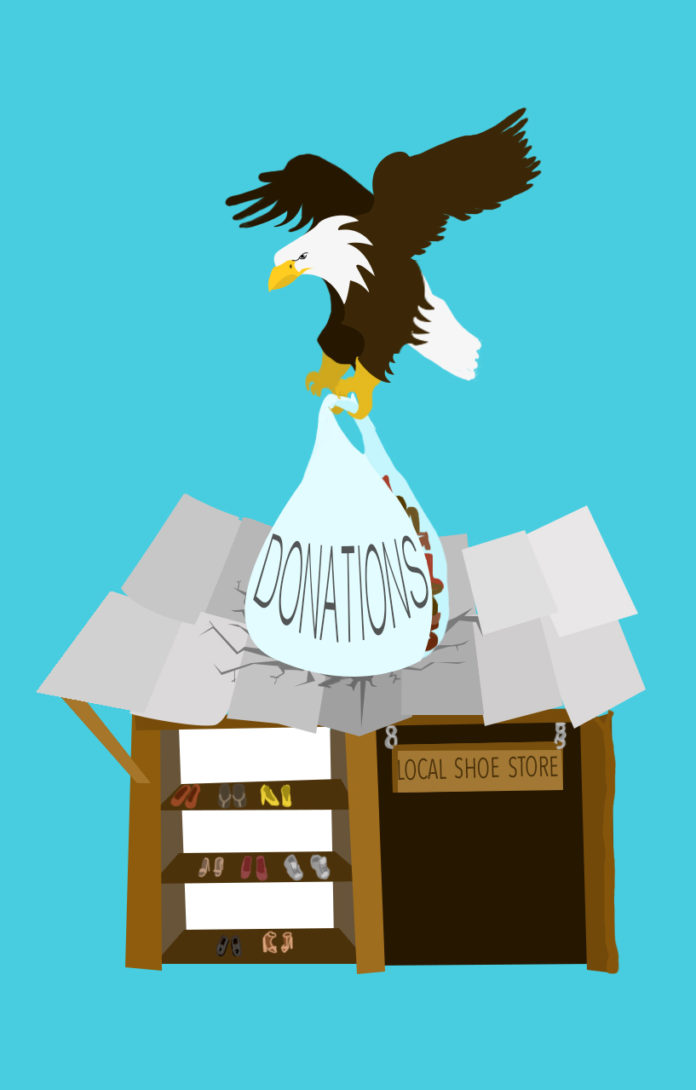Many of us desire, directly or indirectly, to change the world in some way. The extent to which we desire change will vary, as will the motivating forces that drive us and the end goals ultimately sought. While one person may feel compelled to write policy reform, another may desire to plan and execute a food drive in their local community. While one may desire to lobby for the coal industry in the name of job creation, another may desire to lobby for the environment in the name of climate change prevention.
Changing the world “for the better” can be subjective, but when it comes to the fight against poverty specifically, there are measurable indicators that tell us what is effective, and what has proven to merely mask the symptoms of suffering.
Giving a resource to people groups is generally thought to be effective, but in reality, the very act of giving could be perpetuating the cycle of poverty. The issue at hand is rooted in the misunderstanding of the difference between humanitarian aid and development aid.
Speaking generally, humanitarian aid encompasses the direct giving of a commodity or good to someone in need.
Eliza Anyangwe, a writer for the Guardian who specializes in Africa, international development and gender, defines it as such: “Humanitarian aid was born largely out of emergency situations – natural and human-based,” with a focus on “symptoms or keeping people alive.” Thus, humanitarian aid is the over-the-counter prescription that alleviates symptoms and reduces suffering until the “body,” or in this case, the community, can return to its previous state of functioning.
Development, on the other hand, encompasses the establishment and betterment of integral systems within a society, eventually empowering the community to navigate those systems without assistance from outside forces. Development often includes the transfer of knowledge through training sessions and infrastructure development, which equips the people of that nation to sustain and improve upon an establishment’s foundation over time.
According to the same article by Anyangwe, development includes “technical assistance, education, health, job training, agriculture … the focus was livelihoods, growth and getting people out of poverty.”
Problems arise when there is no transformation between humanitarian aid/disaster relief and development aid. Disaster relief is necessary, but continued assistance in the form of goods and resources only inhibits locals from re-establishing the economy themselves, forcing communities to rely on outside sources and preventing locals from finding work in various industries. After all, if Toms is giving shoes to everyone in the community free of charge, why should shoe makers stay in business?
Haiti is a primary example of the detrimental consequences that can result from giving resources to countries that aren’t necessarily recovering from disaster, or that aren’t in dire need of that specific commodity. As stated by a Cornell University case study, Haiti is the “poster child for failed trade liberalization policies.”
According to Cornell’s findings, before the 1980’s, Haiti restricted the importation of certain agricultural products in order to protect the livelihood of farmers. Pressured by the World Bank and the International Monetary Fund, Haiti reduced rice tariffs from 50 to 3 percent, allowing the United States to sell subsidized rice crop to the Haitian market.
Former President Bill Clinton was a proponent of this liberalization, that is, until the effects of the southern movement of rice crop could more clearly be observed.
“Since 1981, the United States has followed a policy … that we rich countries that produce a lot of food should sell it to poor countries and relieve them of the burden of producing their own food, so, thank goodness, they can leap directly into the industrial era,” Clinton said during a hearing before the Senate foreign relations committee. “It has not worked. It may have been good for some of my farmers in Arkansas, but it has not worked.”
The trade liberalization had a paralyzing effect on rice farmers. When rice became more accessible, the general public was no longer willing to pay for the costlier, locally-produced rice, forcing most farmers out of business.
“It was a mistake,” Clinton continued. “I had to live every day with the consequences of the loss of capacity to produce a rice crop in Haiti to feed those people because of what I did.”
Yes, the sudden rice surplus probably helped feed families, but this positive outcome is ultimately short-lived. Continuous humanitarian aid is only sustainable if the giving country can continue to provide the commodity indefinitely. As soon as the country (in this case, the United States) discontinues exporting that commodity, the receiving country is left with no means of producing the commodity independently.
This example has lead many to believe that development aid is far more sustainable and helpful than humanitarian aid (given the country has not recently experienced disaster). Tools and knowledge that help increase agricultural production would have allowed Haitian rice farmers to stay in business, providing a sustainable model upon which they could further generate revenue and resources.
We are not proposing that humanitarian aid is wrong, or that relief efforts should cease altogether. Of course, there are pressing needs around the world that can be met in simple terms through donations. Non-government organizations, social entrepreneurs, governmental agencies and average people err when they believe that mere aid is an effective solution to a problem as complicated as poverty.
Truly ending poverty cannot be accomplished by taking short cuts. The approach must be one with long-term, developmental objectives in mind, executed with determination and patience. Distributing our excess resources elsewhere does little to empower the people of developing nations to produce for themselves in ways that satisfy their personal callings, preserve their cultural traditions and last a lifetime or more.
*** These concepts are more complicated than can be thoroughly explored in this editorial. For more information on the difference between aid and development, click here.






